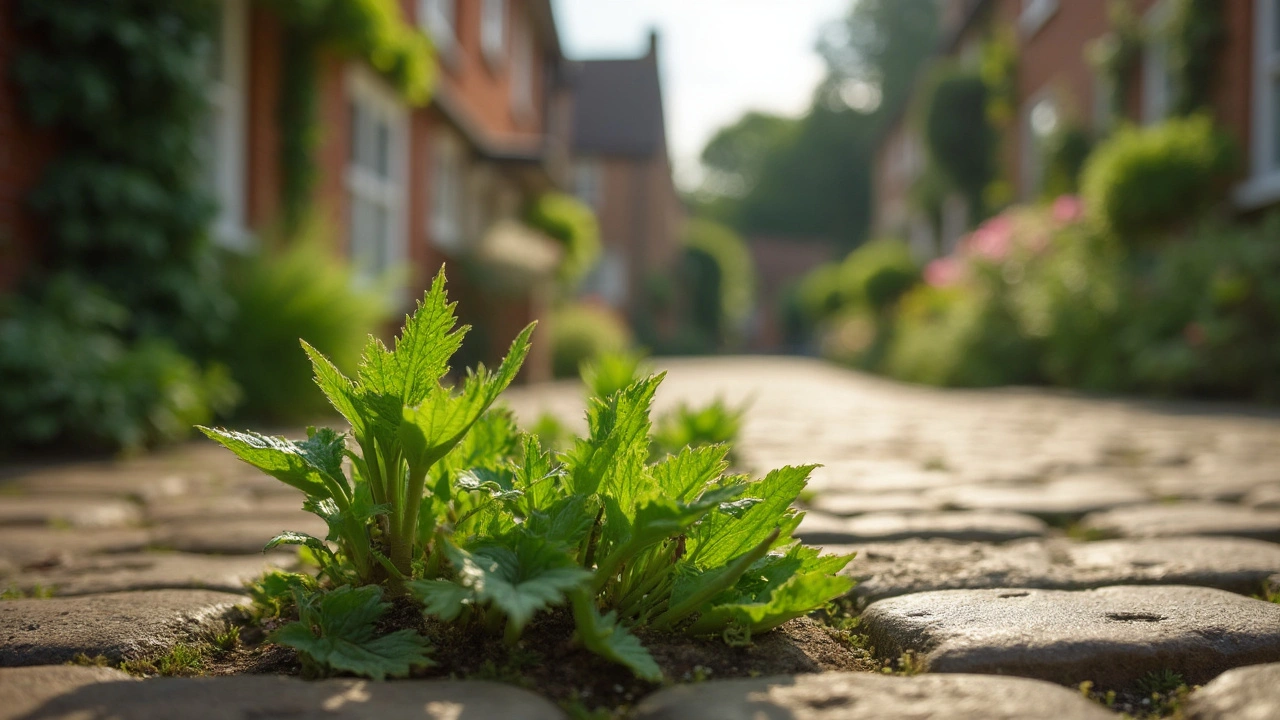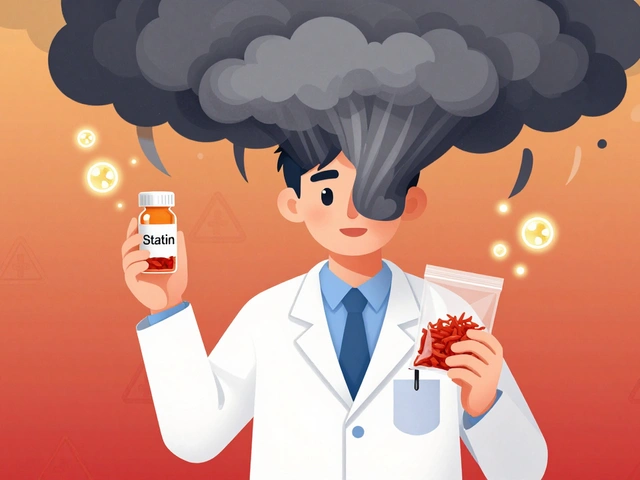Ask any kid who’s played outside, and they’ll tell you about plants growing in the cracks of driveways. Ever pass by what looks like a scruffy, sawtooth weed and never give it a second thought? That green survivor is probably buck’s-horn plantain—the scrappy underdog of wild herbs, barely noticed but packing quiet power generations have turned to for healing. My daughter Elara can spot it a mile away, usually pointing it out next to dandelions. The wild thing is, for centuries, shepherds and herbalists swore by buck's-horn plantain’s ability to soothe injuries, tame coughs, and heal from the inside out. Modern science is finally catching up, and the results are pretty wild. Supplements made from this plant are not just another health fad; they carry benefits backed by tradition and now study. So before you dismiss buck’s-horn plantain as backyard filler, hear how it could earn a spot on your wellness shelf.
What Is Buck’s-Horn Plantain? Legendary Weed, Hidden Hero
Buck’s-horn plantain (Plantago coronopus) gets its name from the jagged, antler-shaped leaves that look like something you’d see poking out of a deer's head. It's pretty common in Europe and the Mediterranean, often dismissed as a weed because it's hardy and grows pretty much anywhere. But in places like Italy and Spain, you’ll spot it at bustling farmer’s markets, where people toss it in salads or make herbal tonics. Its use goes back to ancient times. Roman soldiers rubbed the leaves on their wounds and, when supplies ran low, mixed it into their food. Even Linnaeus cataloged it, calling out its resilience and value as early as the 18th century.
There’s something oddly satisfying about knowing this plant refused to be tamed—if you mow it, it grows back. When drought hits, it just digs its roots deeper. It can thrive in salty soil and survive cold snaps that flatten “fancier” garden herbs. Why should that matter to you? Hardy plants often mean a powerful internal recipe to keep themselves alive, and those bioactive compounds are exactly what make a strong natural supplement.
The leaves are loaded with vitamins—A, C, and K—potassium, magnesium, tannins, and antioxidants. Scientists have picked apart the chemistry of the plant and keep finding more: aucubin (great for anti-inflammatory effects), flavonoids (support your immune system), and iridoid glycosides (studied for wound healing and antimicrobial properties). One study in 2023 from the University of Florence discovered that buck’s-horn plantain had one of the highest antioxidant capacities among wild edible greens. Think about that—higher antioxidants than even spinach or kale, those darlings of health food bloggers.
Don’t skip over the flavor either. Toss a young leaf into your mouth, and you get a salty, tangy taste—almost like wild arugula or mild seaweed. It makes you wonder why more high-end restaurants haven’t gotten in on the game. For folks not ready to forage in their front yard, supplements pack the same nutrition minus the yard work, giving you access to what herbalists have prized for centuries.
“Buck’s-horn plantain is the kind of edible weed that often goes overlooked but consistently delivers when it comes to nutrient content and potential medicinal value.” — Dr. Julia Fellini, Ethnobotanist, University of Florence
Even in today’s world of high-tech medicine, buck’s-horn’s reputation holds up. People are starting to see it not only as an old folk cure but also as a real contender to support health, backed by a mix of practical use and concrete science.
The Science-Backed Benefits of Buck’s-Horn Plantain Supplements
Why bother with this wild plant in supplement form? Well, lots of people don’t have a Roman countryside nearby to forage, so capsules, powders, and tinctures are a practical way to cash in on buck’s-horn’s natural defenses. The real question is, does it deliver results? Short answer: Yes, with evidence to back it up.
Studies from 2022 at King’s College London found that buck’s-horn plantain extract triggered a notable immune boost when tested with white blood cells in vitro, helping them better fight off common pathogens. Another piece of research from 2023, published in the journal Phytotherapy Research, highlighted anti-inflammatory effects when subjects took daily doses of the herb versus a placebo: decreased swelling, faster tissue recovery after moderate exercise, and improved skin healing for minor scrapes and burns. This lines up with folk medicine, where plantain leaves were wrapped around wounds and insect bites to speed up healing.
But immunity and injury recovery aren’t the plant’s only strengths. Ever have nagging indigestion or feel like your gut is out of whack? Buck’s-horn is rich in soluble fiber and mucilage, both known for supporting smooth digestion and easing minor stomach issues. Some users even report less bloating and heartburn when they consistently use plantain supplements. The plant’s antioxidants help mop up free radicals, protecting against the wear and tear of daily life—especially helpful if you are stressed out, running after kids, or not always getting the world’s healthiest lunch (I’m looking at you, drive-thru tacos).
Buck’s-horn is getting attention for its respiratory perks, too. Its expectorant properties, meaning it helps clear out mucus, have been recognized by herbalists for hundreds of years. Allergy season rolls around, and suddenly this humble weed starts acting like a heavy hitter, helping to soothe coughs and unblock sinuses in natural bronchial teas and lozenges. A Spanish study in 2021 tracked patients with mild upper respiratory tract symptoms: those given buck’s-horn plantain extracts had a quicker recovery and reported less frequent night coughing by day five.
But wait—it doesn’t stop with colds. Some researchers are looking at its possible uses for urinary tract health and even as a mild diuretic, helping the body gently flush out toxins and excess fluids. It might help keep cholesterol in check too. A 2023 clinical trial out of the University of Granada found that daily doses over eight weeks slightly decreased LDL cholesterol among adults with borderline-high numbers. Small changes, but real ones, especially when paired with decent eating habits and exercise.
People with sensitive skin may notice another perk: the plant’s soothing action when applied as a topical gel or balm. Some creams for eczema and dermatitis actually list Plantago coronopus among the active ingredients, targeting both inflammation and irritation without the harshness of chemical additives. With all these uses, it’s no wonder buck’s-horn plantain is moving from the cracks in the pavement to the front of modern supplement shelves.

How to Use Buck’s-Horn Plantain Supplements Effectively
Thinking of testing the waters with buck's-horn plantain supplements? Good news: they’re not complicated to use and come in a bunch of forms. My son Basil is all about gummies (if it looks like candy, he’s in), while I stick to capsules or sometimes steep dried leaves in hot water when I need a break from coffee—surprisingly refreshing, kind on the stomach, and easy to blend into daily routines regardless of your style.
Most supplements are either leaf extracts, powders, or pure capsules. For targeted skin help, you’ll find topical creams or gels. The easiest way to get started: start low and slow, especially if you’ve never tried plantain before. The average adult dose runs about 500 mg to 1,000 mg of dried leaf extract per day. If you go with tea, one heaping teaspoon per cup is plenty. For kids, it’s safer to stick to teas or syrups made specifically for them and follow age-appropriate dosing. Always check labels, and if you’re on blood thinners or need to avoid vitamin K, run it by your doctor—plantain, like kale, is loaded with K.
- Capsules: Easiest for busy folks. Pre-measured doses, no weird taste.
- Teas: Good for mild respiratory support and gentle digestive help. Add honey and lemon for a tasty, throat-soothing boost.
- Topical creams: Great for minor bites, scrapes, dry patches. Store in the fridge for a cooling extra effect.
- Tinctures/drops: Rapid absorption, especially for those who struggle with capsules. Mix into water or juice.
Here are a few pro tips:
- Buy supplements that clearly mark Plantago coronopus (not just plantain) since dozens of species exist.
- Look for products with third-party testing so you know what you’re actually getting.
- Opt for organic or wildcrafted sources—less chance of nasty pesticide residues.
- Rotate usage: try it for a few weeks, take a break, and notice if you actually feel a difference. Everyone’s body reacts a little differently.
Pairing plantain with a balanced diet boosts absorption and benefits. Toss it with other greens if you cook at home, or take it along with vitamin C-rich foods to maximize plant compounds. Think of it as another layer of defense, alongside washing your hands, staying hydrated, and all the usual wellness basics. For folks with chronic health concerns or on medications, scheduling a talk with a nutritionist isn’t overkill—it’s just smart planning, not overcautious. My own family’s seen minor improvements: less catching every sniffle at preschool and better recovery after minor scrapes, which for a house with two active kids really adds up.
Choosing Quality Supplements and Avoiding Common Pitfalls
Here’s the part people often ignore: not all supplements are made the same. The wellness aisle looks like the cereal aisle these days—wall to wall bottles—so how do you know you’re not wasting cash or even risking your health? My top lesson is simple: trust, but verify. Brands that skip third-party lab testing or hide ingredient sourcing are waving a red flag the size of a stop sign. Real, quality buck’s-horn plantain supplements will state their botanical source, use clear ingredient lists, and provide batch testing results if you ask.
Steer clear of cheap blends that lump plantain with random fillers. You want pure extract or powder, with maybe a natural binder and little else. Avoid wild claims like “miracle cure” or “cure-all”—no supplement does everything, and if it sounds too good to be true, it usually is. Stick with companies you can actually talk to or at least email, not faceless global warehouses. European producers, especially from Italy and Spain, tend to offer higher quality—makes sense since those folks have used the plant for food and medicine since way back. Yes, it might cost a few more bucks, but better safe than sorry.
Watch for signs of quality:
- Third-party lab results (actual certificates, not just claims)
- Clear labeling of Plantago coronopus as the species
- Recommended dosages based on real studies, not just marketing speak
- No weird proprietary blends you can’t decipher
- Harvested at peak, ideally wild or certified organic
Do your own R&D by checking recent customer reviews (not just one or two), and ask your healthcare provider if you’re ever unsure. Even the best supplement works best as part of a healthy routine; buck’s-horn won’t cancel out a fast-food binge but will shore up the gaps when used smartly. Listen to how your body feels and keep an eye on subtle shifts: more steady energy, easier breathing at night, less repeat sickness, or skin that calms faster after outdoor adventures. Buck’s-horn plantain isn’t a miracle worker, but it’s one more tool—tough, reliable, and hiding right under our noses all along.





Joey Yap on 11 May 2025, AT 01:10 AM
Resilience in wild plants mirrors the quiet strength we often overlook in daily life. Buck’s‑horn plantain, thriving in cracked pavement, offers a concrete example of how adversity can drive hidden potential. Its jagged leaves, reminiscent of ancient antlers, speak to an evolutionary wisdom that bends but does not break. When we consider the plant’s capacity to grow in salty, arid soils, we glimpse a metaphor for human adaptability amid hardship. The bioactive compounds-aucubin, flavonoids, iridoid glycosides-are not merely chemical curiosities; they embody a dialogue between earth and organism, a partnership forged over centuries. Modern science, by quantifying antioxidant capacity, validates what folklore has long suggested: that nature stores remedies in the most unassuming places. Philosophically, this challenges our tendency to dismiss the commonplace as insignificant. By integrating such supplements, we honor a humility that acknowledges the interdependence of human health and botanical heritage. The act of taking a plant‑based capsule becomes an ethical gesture, a quiet reverence for the ecosystems that sustain us. Moreover, the plant’s anti‑inflammatory properties align with the principle that healing often begins with balance, not aggression. In the context of immune support, it reminds us that nurturing internal forests can fortify borders against external threats. The mucilaginous fibers aid digestion, illustrating how physical texture can translate into systemic comfort. Respiratory benefits, observed in reduced cough frequency, underscore the plant’s role as a bridge between inhaled air and bodily equilibrium. Even the modest diuretic effect hints at a holistic regulation of fluid, echoing ancient concepts of bodily fluids in harmony. From a broader perspective, embracing buck’s‑horn plantain supplements calls us to reconsider the hierarchy of “superfoods” and recognize that true potency may lie in the weeds beneath our feet. This shift in perception fosters a more inclusive view of nutrition, one that values biodiversity over monoculture. Ultimately, the lesson is clear: by paying attention to the overlooked, we uncover resilient allies in the pursuit of health and well‑being.